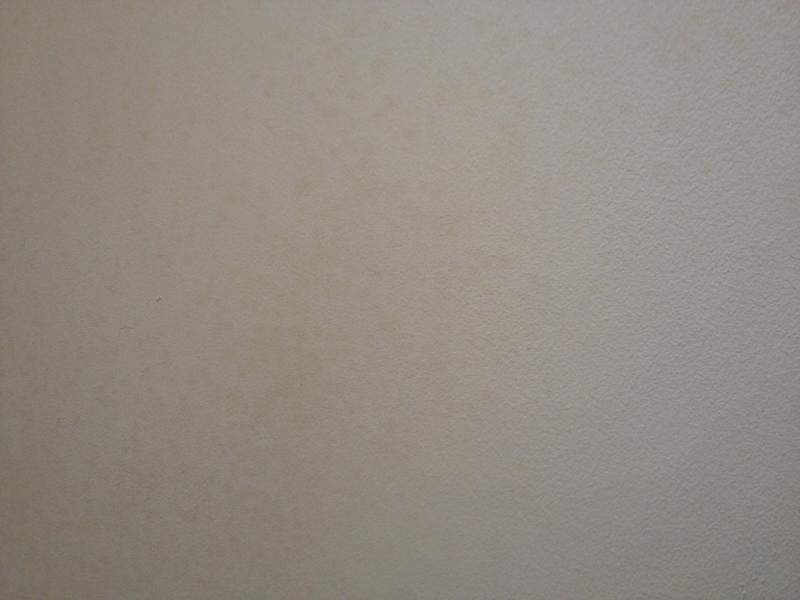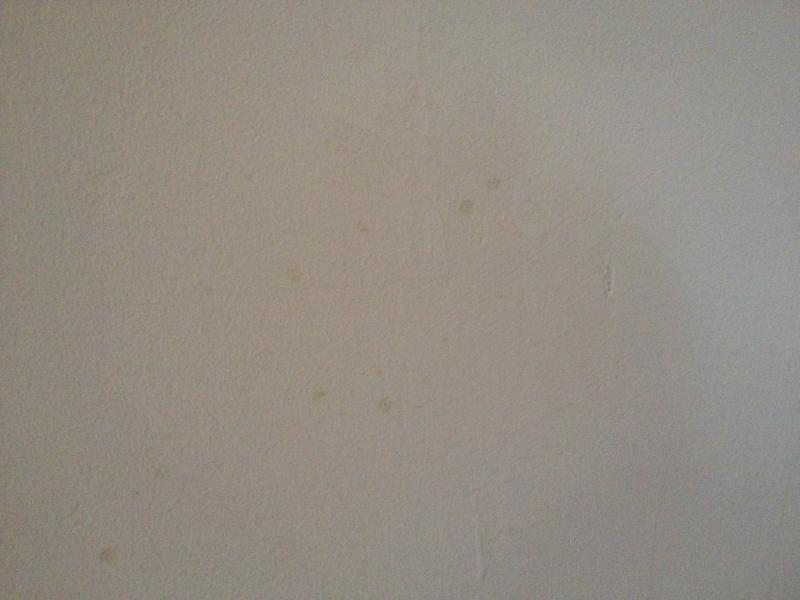Hi all
We had the attic bedrooms in our dormer chalet bungalow skimmed (to cover Artex) 3 years ago. The dwarf walls are made of concrete blocks and are one block thick - they support the roof. There's a triangular shaped attic space behind the dwarf walls. There are two dormers in each bedroom - the window only opens in one of these. In both bedrooms we've noticed slightly darker spots have appeared on the interior surface of the dwarf walls (see pictures) that were re plastered. It looks a bit like someone has sprayed lemonade on the wall but the spots are a bit bigger - the size of a pea maybe. There are also a few spots on the top of the side of the dormer wall in one bedroom (on the hinge side). One bedroom (the worst affected) is painted with breathable eco paint, the other with cheap white emulsion.
Are these spots due to mould? And is it the cause likely due to condensation (rather than damp) as all bar the dormer wall are internal walls which adjoin the attic? I wondered if it were due to poor air circulation as the spots appear mainly behind or next to furniture and we do have issues with overheating in the summer.
Confirmation that this is mould much appreciated!! And what to do about it - am checking out the wiki links for heritage-house.org as we speak.
thanks in advance!
[/img]
We had the attic bedrooms in our dormer chalet bungalow skimmed (to cover Artex) 3 years ago. The dwarf walls are made of concrete blocks and are one block thick - they support the roof. There's a triangular shaped attic space behind the dwarf walls. There are two dormers in each bedroom - the window only opens in one of these. In both bedrooms we've noticed slightly darker spots have appeared on the interior surface of the dwarf walls (see pictures) that were re plastered. It looks a bit like someone has sprayed lemonade on the wall but the spots are a bit bigger - the size of a pea maybe. There are also a few spots on the top of the side of the dormer wall in one bedroom (on the hinge side). One bedroom (the worst affected) is painted with breathable eco paint, the other with cheap white emulsion.
Are these spots due to mould? And is it the cause likely due to condensation (rather than damp) as all bar the dormer wall are internal walls which adjoin the attic? I wondered if it were due to poor air circulation as the spots appear mainly behind or next to furniture and we do have issues with overheating in the summer.
Confirmation that this is mould much appreciated!! And what to do about it - am checking out the wiki links for heritage-house.org as we speak.
thanks in advance!
[/img]



